Here for Good for 100 Years
Legacy began with opening of Scripps La Jolla
Scripps Health celebrates 100 years of caring for our community

Scripps Memorial Hospital and Scripps Metabolic Clinic in La Jolla (now Scripps Clinic) celebrate 100 years
“The most important and beautiful gift one human being can give to another is, in some way, to make life a little better to live,” declared philanthropist and journalist Ellen Browning Scripps in 1924.
Miss Ellen, as she was affectionately known, embodied this philosophy, donating millions to charitable causes during her lifetime. And perhaps nowhere is her commitment to improving the lives of others more apparent than in her founding of Scripps Memorial Hospital and Scripps Metabolic Clinic in La Jolla (now Scripps Clinic) 100 years ago.
The changes since have been monumental. What began as just one hospital and one clinic has grown into a prominent San Diego health care system that consistently ranks among the best health care providers in the nation.
Scripps treats more than 600,000 patients annually at its five acute-care hospital campuses, 30 outpatient centers and clinics and hundreds of affiliated physician offices. Scripps is also one of the largest employers in San Diego, with 3,000 affiliated physicians and more than 17,000 employees, and is recognized as one of the country’s best companies to work for.
Visionaries
When Mercy Hospital joined Scripps in 1995, the health care leader found a perfect match not just in its mission, but also in its origins. Like Scripps, Mercy Hospital was founded by another exceptional woman dedicated to helping others, Mother Mary Michael Cummings.
“San Diego would not be what it is today without the vision of two strong, intelligent and determined women — Ellen Browning Scripps and Mother Mary Michael Cummings,” says Chris Van Gorder, Scripps president and CEO. “Their commitment to provide for the health care needs of a growing community has resulted in the Scripps Health of today.”
As Scripps celebrates its first 100 years of service and looks ahead to its next 100, it remains as committed as ever to honoring the legacy of these women, the thousands of employees who’ve shaped the institution and the millions of San Diegans whose lives have been made better by Scripps.
“At the end of the day, I always ask myself, ‘Would Miss Ellen and Mother Mary Michael be proud of the work we did today?’” — Chris Van Gorder, Scripps president and CEO
Ms. Ellen's legacy
Ellen Browning Scripps was recovering from a broken hip when she got the idea for her biggest charitable project to date: She would create a new, philanthropy-based hospital in La Jolla, one that would serve both the rich and the poor, providing the best care available. In September of 1924, her idea became a reality when Scripps Memorial Hospital opened its doors on Prospect Street.
At the time, La Jolla was home to just 2,000 people, and that first hospital consisted of 57 beds with a nursery and children’s ward — a far cry from what San Diegans might picture when they hear the word “Scripps” today. Still, the hospital was nothing short of grand for its time. The facility immediately set a new standard for care in the community.
Miss Ellen made it abundantly clear Scripps was something different, something special, when she opened Scripps Metabolic Clinic in December of that same year. The research facility, which was partly inspired by the discovery of insulin, was created to assist in the treatment of metabolic diseases, including diabetes, anemia and nephritis. It also established Scripps from the start as an institution leading the way in health care advancement.
Decades of growth
Since then, Scripps has never stopped leading.
In 1950, Scripps hired Anita Figueredo, MD, the first female surgeon in San Diego. In 1978, it acquired the home of one of the first full-fledged emergency departments in San Diego, San Dieguito Hospital, which became Scripps Memorial Hospital Encinitas.
In 1986, it added Scripps Memorial Hospital Chula Vista, which combined operating licenses with Scripps Mercy Hospital in 2004 to become Scripps Mercy Hospital Chula Vista, and in 2022, became the only health system in the region with two Level I trauma centers. Scripps is brimming with firsts in San Diego.
Throughout its history, Scripps has continued to expand its care. Scripps is a national leader in disease diagnosis and treatment, and injury prevention, and a longstanding member of the Association of American Medical Colleges with three highly regarded graduate medical education programs.
The health system has added hospital and outpatient locations throughout the county, and opened centers focusing on cardiovascular and cancer treatment, as well as orthopedic research, among other specialty services, all in an effort to improve the lives of more San Diegans.
A Century of Innovation and Caring
For 100 years, San Diego has trusted its health to Scripps. And San Diego has watched as Scripps has grown from the 57-bed hospital founded by Ellen Browning Scripps into a premier health care system that treats 600,000 patients annually. Scripps has proven time and time again that it's here for good and is a San Diego institution — past, present and future.
Strong community support
Of course, none of Scripps’ work would be possible without support from the community.
“Philanthropy has been at the heart of Scripps since its founding 100 years ago,” says John B. Engle, Scripps’ corporate senior vice president and chief development officer. “As a nonprofit health care system, we’ve made tremendous advances through the years in our facilities, technology and tools to advance medicine, thanks to our generous donors.”
As grateful as Scripps is for the community’s support, Scripps Health Board Chairman Kevin Hamilton says the feeling is mutual.
“Our board of trustees is made up of volunteers from the community — all with different areas of expertise — but with one common goal: to help Scripps provide the best possible health care to our community. We take that responsibility seriously,” Hamilton says. “As the longest-established health care system in San Diego, we are here to help Scripps care for our community now and for generations to come.”
The mission continues
As Scripps looks ahead to its next century of service, it would seem that the lessons of the first 100 years provide an excellent model.
In fact, Van Gorder often finds himself thinking back to Scripps’ founding — to those two visionary women who dreamed of better serving San Diego with nonprofit health care.
“At the end of the day, I always ask myself, ‘Would Miss Ellen and Mother Mary Michael be proud of the work we did today?’” he says.
Judging by the number of lives Scripps has touched—and has made, as Miss Ellen would say, “a little bit better”— that answer is a resounding yes.
Learn about more ways to support Scripps through our Here for Good capital campaign.
Decades of Dedication, Stories of Service
Scripps couldn’t have made it to 100 without the dedicated employees and volunteers who spend their days caring for patients and supporting staff. Many have spent decades at Scripps and have witnessed firsthand how the health care system has grown and changed over the years.
Here, six longtime Scripps employees and volunteers share what they’ve seen, what they’ve learned and why they’ve made Scripps their home away from home.

Beatrice “Bea” Fulgham
Current Volunteer, Retired Nursing Supervisor, Scripps Memorial Hospital La Jolla
64 years of service
Beatrice Fulgham has been with Scripps La Jolla for so long that she likes to joke she didn’t actually know the hospital’s founder, Ellen Browning Scripps. Fulgham did, however, work at Scripps’ original location on Prospect Street, joining as a nurse in 1960. She ended her official employment in 1992 — only to start as a volunteer immediately after.
“Basically, I resigned one day. Then I went downstairs and said, ‘OK, I’m back,’” she recalls with a laugh.
A volunteer for 32 years, she’s the longest-serving volunteer in hospital history.
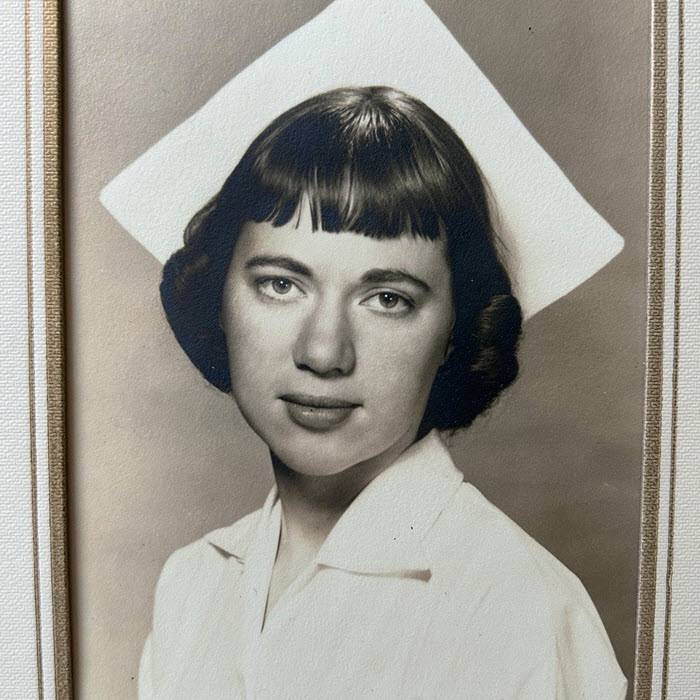
Beatrice “Bea” Fulgham, early years
“I love that it keeps me social,” she says. “Plus, it gives me that feeling that I’m doing something important and making a difference.”
Fulgham’s affection for Scripps is clear as she describes the changes she’s seen the hospital undergo, from Scripps La Jolla’s move from Prospect Street to Genesee Avenue to expanding and building new hospital towers. But one of her most memorable moments is the inauguration of Scripps’ first trauma center in the 1980s. A supervisor at the time, Fulgham says she was given a “crash course to learn all about the new facility.”
“It was an incredible time,” she says.
But just as precious to her are the memories she has of the people — be it staff, patients or volunteers.
“When I started at Scripps La Jolla, I remember I just got this comfortable feeling. Everyone was so welcoming and upbeat and exciting,” she says, “and that feeling has never gone away.”

Ann McCullough
Surgical Technologist, Scripps Memorial Hospital La Jolla
51 years of service
Listening to Ann McCullough talk about her responsibilities at Scripps La Jolla, you can see how important the work she and her team do is for patients at Prebys Cardiovascular Institute.
As a certified surgical technologist, she sets up the operating room before a procedure, counts and preps all of its equipment, helps patients get to the operating room, assists the surgeon during surgery and ensures the room and equipment are returned to pre-surgery condition afterward.
While this responsibility might sound intimidating to some, for McCullough, it’s a perfect fit.
“I really do love being in the operating room,” she says. “I come to work every day with the expectation that I’m going to help someone and provide quality patient care.”
McCullough says she’s enjoyed being part of many incredible health care advances at Scripps. She’s particularly appreciative of A. Brent Eastman, MD, Scripps’ former chief medical officer and the driving force behind Scripps’ first state-of-the-art trauma center in La Jolla.
“We all felt so privileged to be there for that new era at Scripps,” she says.
McCullough was also part of Scripps’ adaptation of the left ventricular assist device (LVAD) heart surgery, a therapy for patients awaiting a heart transplant. She proudly recalls when she and another surgical tech supported an early LVAD case of a woman in her 30s, who eventually received a heart transplant. But that lifesaving transplant was only possible because of the LVAD operation.
“I’m very blessed to get to do this work,” she says. “My time at Scripps has been a wonderful and exciting journey, and I’ve loved all of it.”
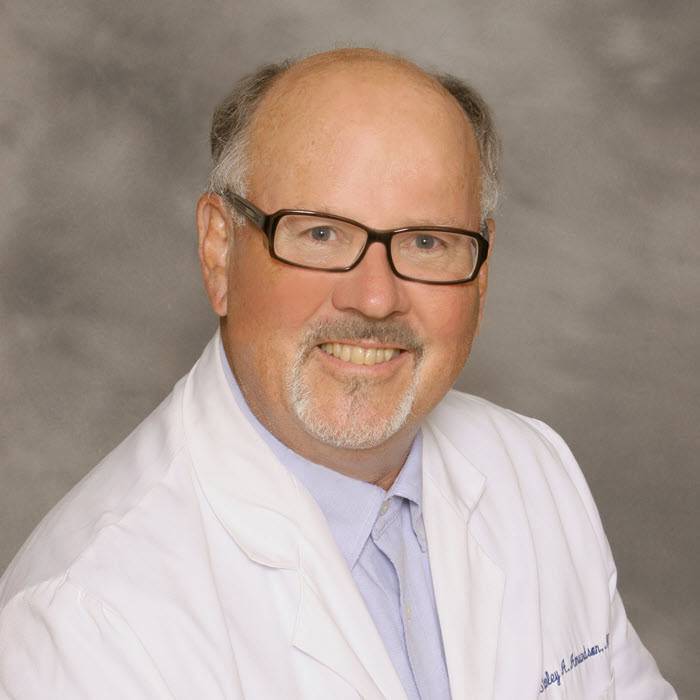
Stan Amundson, MD
Assistant Director, Residency Program, Scripps Mercy Hospital, San Diego
50 years of service
The connections Stan Amundson, MD, has to Scripps Mercy Hospital, San Diego, run deep. His daughters were born at Scripps Mercy, and both became physician assistants who completed some training there. He and his wife (also born at Scripps Mercy) both did their residencies at the hospital.
“And my wife’s grandfather was actually the baker at Scripps Mercy, back when we had a bakery,” he adds.
During his own time at Scripps Mercy, Dr. Amundson has often found himself on the leading edge of medical advancements, such as helping administer a brand-new treatment for metastatic testicular cancer decades ago.
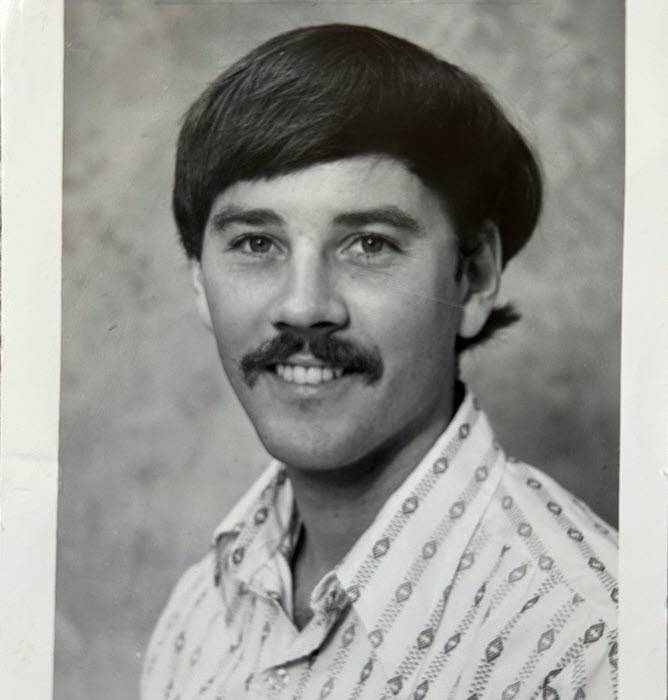
Stan Amundson, MD, early years
He has also participated in multiple research projects, including the nationally recognized point-of-care ultrasound studies (POCUS) led by Bruce Kimura, MD, a cardiologist at Scripps.
Today, he stays at the forefront of medicine by leading the same Scripps Mercy residency program in which he was once a resident.
“I’m really proud to train our excellent physicians for the future,” he says. “They’re smart, motivated and go on to do incredible work all over the country and right here in San Diego.”
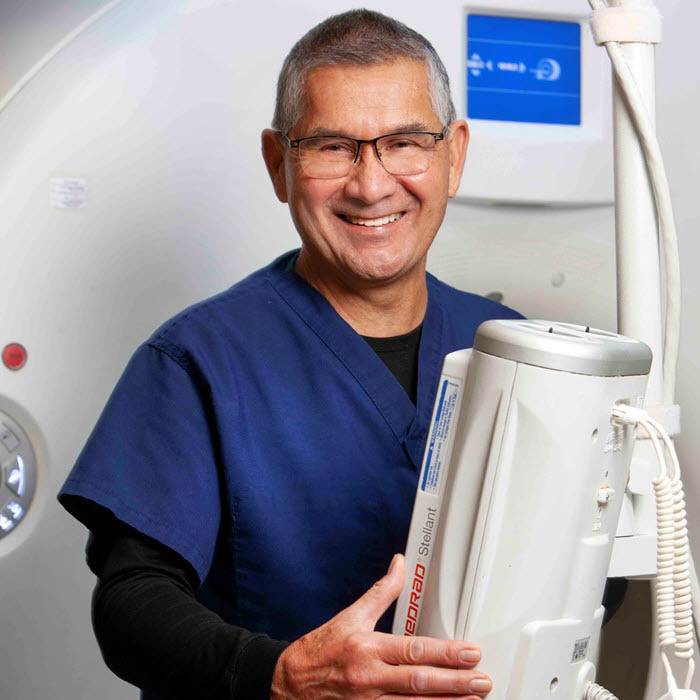
Donie Inis
CT Technician, Scripps Mercy Hospital, Chula Vista
45 years of service
A lot has changed in the world of medical technology since Donie Inis entered the field. His current job of CT tech didn’t even exist when his career started — Inis was working in radiology when the opportunity came about. Curious about this new CT scanning, Inis used his days off to train himself on it.
“At the time, there was a mobile unit that traveled from hospital to hospital. So, I’d go to whatever hospital it was at, to observe and to learn that way,” Inis says.
Decades later, Inis still loves his job.
“I’ve become really good friends with people I’ve worked with, and helping patients is very rewarding,” he says. “A lot of times people will come in and they’ll be nervous, so it’s our job to help however we can.”
Asked how it feels to have been with Scripps for 45 years, Inis chuckles at the number. “Really, it’s gone by pretty fast. That’s the great thing about doing something you love to do.”
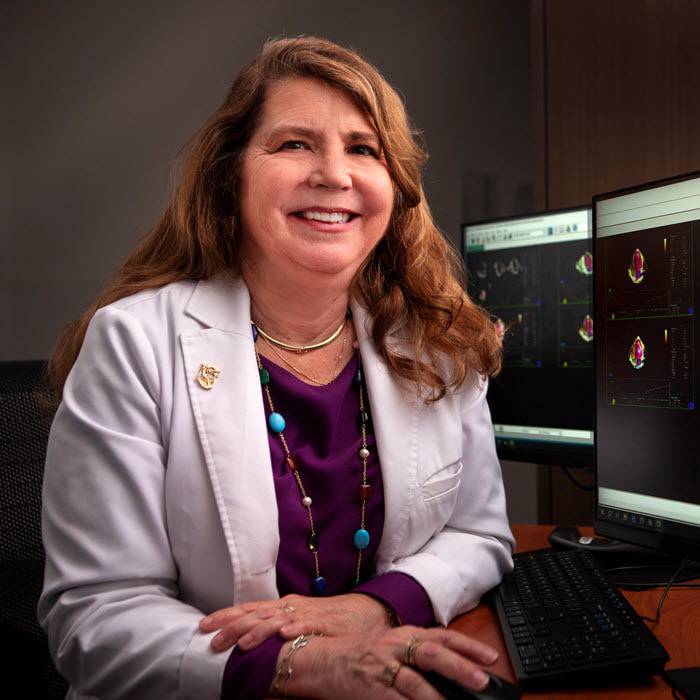
Karen Whalen
Imaging Supervisor, Scripps Memorial Hospital Encinitas
41 years of service
When Karen Whalen began working at Scripps Encinitas, the hospital was “basically a single-story facility,” she says, with a much smaller number of beds for patients.
“What we did in a month back then is what we do in a day now,” she says with a laugh. “But, remember, that was decades ago.”
Whalen says both the facilities, as well as the quality of the equipment and imaging techniques, have grown “to a phenomenal degree” during her time at Scripps — those advancements are one of her favorite parts of her job. “Without that, we wouldn’t be able to make such a significant impact on patients.”
One thing that hasn’t changed? The strong sense of community she feels with the physicians and staff.
“We always celebrate each other and the culture is so positive,” she says. “I know this can sound like a cliché, but it’s true: Working here really feels like being part of a family.”

Sue Dastrup, RN
Radiation Oncology Nurse, Scripps Green Hospital and Scripps Cancer Center
40 years of service
Sue Dastrup first took a job at Scripps assuming she wouldn’t stay long. Originally from Massachusetts, Dastrup figured she’d spend a little time on the West Coast before moving closer to family. Forty years later, she hasn’t gone anywhere.
“Whenever I think, ‘Should I retire?’ I just can’t do it yet,” Dastrup says. “I love my job. I love what I do.”
As a radiation oncology nurse at Scripps, Dastrup and her team are the first people patients see after receiving a diagnosis, a role she takes very seriously. “It’s a very vulnerable appointment,” she says, “so my job involves counseling, caring for and supporting all of my patients and their families throughout their journey in oncology.”
When Dastrup knows she’ll be working with a patient who has a particularly challenging diagnosis, she’ll research the disease process and its treatment options, so she’s equipped to provide the best care possible.
“Whenever my team and I see an opportunity where we can do more for our patients, we do it,” she says.
This content appeared in San Diego Health, a publication in partnership between Scripps and San Diego Magazine that celebrates the healthy spirit of San Diego.
Learn about more ways to support Scripps through our Here for Good capital campaign.